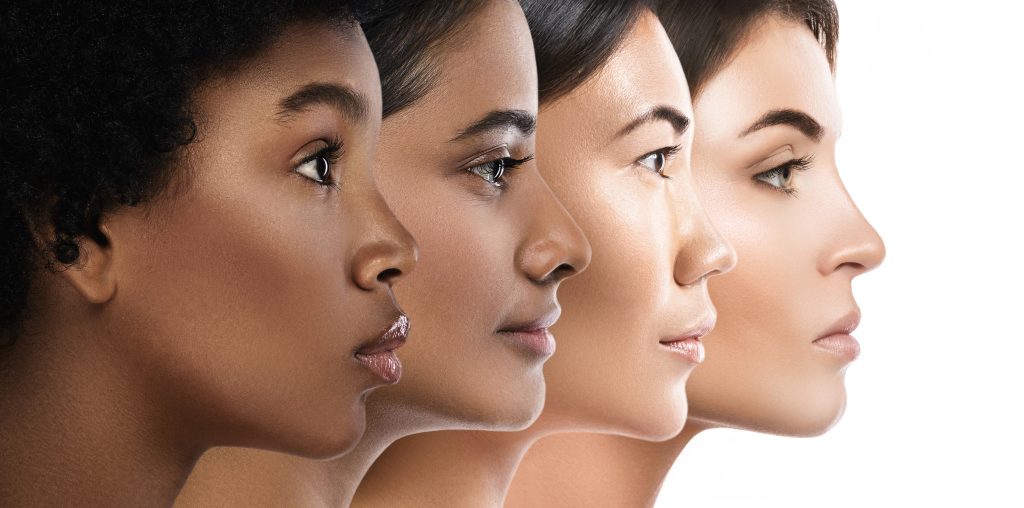The Evolution of the Facelift
Rhytidectomy is the scientific name for a “facelift,” which is one of the most common forms of aesthetic plastic surgery performed today. This now common procedure has had a long and interesting evolution. The first facelift took place 120 years ago. A German surgeon, Eugen Hollander, was approached by an elderly aristocratic woman who wanted him to lift her cheeks and the corners of her mouth. After a fair amount of thought, Hollander agreed.
Little more than a dozen years later, the practice of facial reconstruction became a matter of frequent necessity brought about by the cranial injuries sustained by soldiers in World War I. Thus, in this brief time, two very different and significant reasons for facial surgery emerged: to renew the appearance of countenances altered by the aging process and to restore a natural appearance to faces damaged by injury or illness.
Let’s take a look at the century of evolution of the facelift in layman’s terms. Because several different procedures might be involved in a facelift, we’ll explain their differences and purposes.

At First, a Lift Was All It Was
In the 1920s, following the lead of what military surgeons learned during World War I, facial surgeons used two revolutionary techniques. The first was skin grafting, which allowed tissue from one location on the body to be grafted to damaged areas. The second procedure was employed by Dr. Harold Gillies, a British plastic surgeon. He literally lifted facial skin and re-draped it over the underlying features. Gillies work was so popular that came to be known as the “Father of 20th-Century Plastic Surgery.” His methods and those of his colleagues remained the default procedures for facial surgery for almost 50 years. As a result of his work, the facelift became a commonly practiced procedure.
While the draping technique used by Gillies addressed many significant issues, some found it inadequate for restoring the natural appearance sought by many who desired facelifts. One response to this, the SMAS (superficial muscular aponeurotic system) concept was pioneered in the 1970s. This was the first attempt to use underlying muscle tissue, called platysma, to modify the appearance of the face rather than using the skin itself.
The evolution continued into the 1980s with another form of alternative tissue augmentation called the deep plane procedure. This type of operation was intended for the upper and middle portions of a patient’s face to raise the brow and enhance a natural, more youthful appearance.
Beginning in the 1990s, plastic surgeons began to try to restore subcutaneous volume, which is the muscle and fat, that is lost during the aging process. Over the last 30 years, there has been a concerted effort to minimize scarring and to be less aggressive than when using the methods that were previously employed.

Corrective Facial Procedures Available Today
The traditional idea of a complete facelift, the rhytidectomy, means tightening the soft tissue of the face from the cheeks to the collarbone. This improves the appearance of the cheeks, the neckline, and the jowl line. Attention is paid to the underlying connective tissue to make certain a natural, youthful appearance is regained. Incisions, importantly, are made along normal creases to make scarring unnoticeable. Sometimes, to enhance this procedure, additional work on the chin, the skin, liposuction, or fat augmentation is performed.
A total facelift is often not necessary for all patients desiring to improve their facial features. For some, the desired procedure may be a neck lift. Aging can result in the sagging of the platysma, sub-dermal muscle tissue in the area around the throat that results in a condition commonly referred to as “turkey neck.” For this procedure, the skin and the underlying tissue is elevated with unnecessary tissue being removed. Again, incisions are made along natural crease lines beneath the chin.
Another common procedure used in combination with a facelift is mandible augmentation and buccal fat removal. Essentially this is cosmetic surgery to restore the youthful appearance of the chin and jowl area. Typically this also corrects imbalances in the patient’s features. Often with this operation, a synthetic implant is placed over the bone of the chin and the buccal, or fat, pads inside the cheeks, are adjusted according to the needs of the patient. Incisions are made beneath the chin and also inside the mouth.
When most of us think of liposuction, we imagine fat being mechanically removed from the area of our stomachs, hips or thighs. Liposuction and fat augmentation are actually useful tools used by the plastic surgeon to change the topography of our faces and restore jawlines, temples, lips, cheeks, and necks. The fat used in enhancing our facial features is harvested from our own bodies in the abdomen or thighs through a small injection.
All of these procedures can work together to achieve the patient’s desired appearance.
Our Faces Light the Way
So much of our self-esteem is caught up in our appearance. When we dislike something about our features, we tend to think much less of ourselves and our abilities. Often our relationships suffer and we are extremely self-conscious. On the other hand, when we correct the issues we find disagreeable about our appearance, our esteem rises immensely. We are much more self-assured, willing to take on new challenges, and confident in our relationships.
Far from the simplistic, literal lifting of the face of 120 years ago, today’s facial plastic surgery procedures are personalized and time-tested to produce results that enhance our natural beauty and are pleasing to the eye and uplifting to the heart.
Contact Us
If you’re looking for a plastic surgeon for your facial plastic surgery procedure, contact Dr. Ketih Ladner. Dr. Ladner has a wealth of experience when it comes to various facial plastic surgery procedures. Dr. Ladner is also double-board certified by the American Board of Facial Plastic and Reconstructive Surgery as well as the American Board of Otolaryngology/Head and Neck Surgery. Call the office today at (303) 253-7686 or go online to schedule a consultation for more information.


Leave a Reply